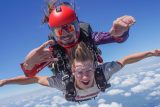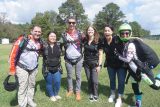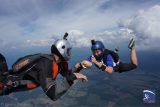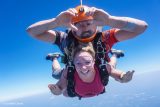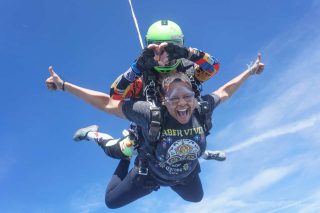What if You Pass Out While Skydiving?
Skydiving
2 years ago
What If you Lose Consciousness While Skydiving?
AHHHH!!!! Cue the crisis reaction! Only kidding … passing out while skydiving is incredibly rare and almost always preventable. Can you pass out while skydiving? Of course, anything is possible. However, being passed out skydiving is up there with the rarity of winning the lottery on your birthday at the exact time of day you were born while vacationing in Mexico – it’s possible, but what are the chances? Let’s dive into how to not pass out while skydiving and make sure you have the best first jump EVER!
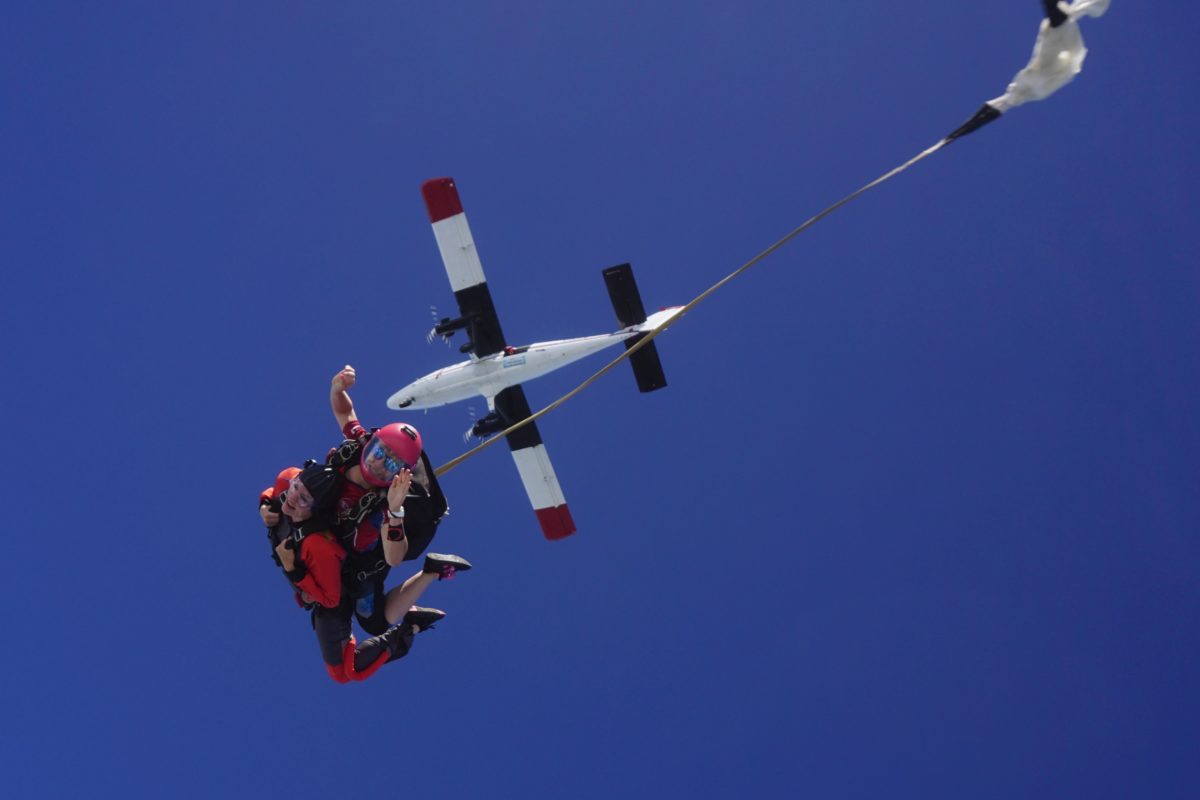
Is It Normal To Pass Out While Skydiving?
Nope, it is not common to faint while skydiving. Don’t let the slight chance stop you from conquering your fears and doing something awesome (AKA going skydiving)! Our instructors are sufficiently trained and more than able to tackle any and every situation to ensure their student has a successful skydive. Think of it like this: skydiving is an extreme sport that inherently has risk, but that risk is mitigated by prioritizing and fostering a culture of safety. We take steps before and during every jump to prevent fainting, and if it does happen, we’re prepared.
What Causes Some Students To Pass Out During A Tandem Skydive?
The most common reasons for fainting during a skydive include having an undisclosed medical condition, low blood sugar, or an extreme fear of heights (acrophobia).
- Having a medical condition (such as low or high blood pressure) that isn’t relayed to the skydiving staff is a big no-no in the skydiving world. While people with chronic medical conditions complete skydives all the time, it is critical to let us know of any health concerns you may have and if/how you control them. Communication is key for a fun skydive for everyone!
- Low blood sugar, or even dehydration, are culprits of why some people flake out while skydiving. How would you prepare your body for a day at the amusement park? Or maybe a jog on a summer day? Eat light and drink plenty of fluids! The same concept goes for skydiving. Prepping for the day ahead is critical; check out our best pre-jump tips here!
- Acrophobia (and other fears) can be attributed to someone fainting while jumping. If someone has a debilitating fear of airplanes, heights, or closed spaces, panic can set in and could result in passing out. We would like to note that we’ve never known anyone who has passed out while skydiving due to fear. If you think you could fall into this category, let us know! We’re happy to help you practice breathing and remain calm on the way up to altitude. Remember: don’t hold your breath! There’s plenty of air up there, and it’s self-serve!
What Happens If You Pass Out Skydiving?
It’s going to be okay! As a tandem student, your instructor is well-equipped to take control of the situation and guide the two of you back to the landing area. As a solo jumper, there is technology in place to ensure that a canopy does deploy. When people on the ground notice a jumper who appears unable to control their canopy or their landing, the correct people will be contacted and the situation immediately addressed.
Skydivers are always watching one another land to learn new techniques and assess the environmental conditions at the time (wind), they’ll be able to easily spot a jumper who doesn’t look quite right! Skydivers are always looking out for one another, which is one reason our community is so close-knit.
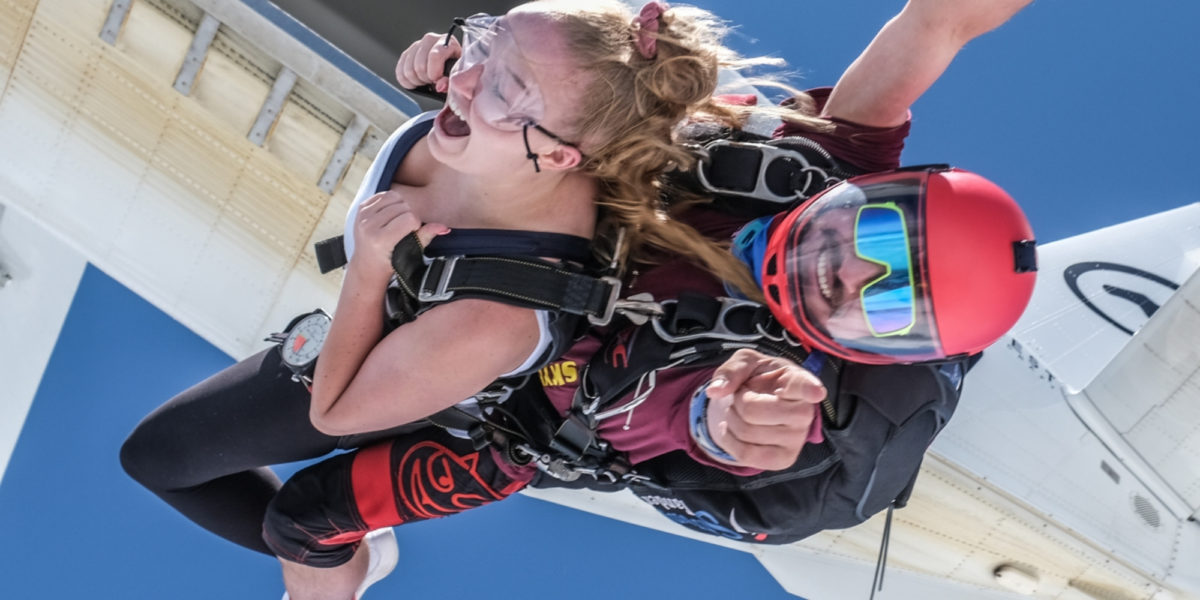
Safety Features In Place If A Tandem Instructor or Student Passes Out During Skydiving
Skydiving is chock-full of safety features and a safety-oriented mindset, which is why we’re able to successfully skydive over and over and over again. There’s a nifty device called an Automatic Activation Device (AAD) that is securely fastened inside all tandem rigs and student rigs. The AAD is a small computer that deploys the reserve parachute in the event that the skydiver cannot deploy their canopy in time.
How does an AAD work? The AAD is turned on prior to the skydive while the jumper is still on the ground. This way, the device is able to calculate the air pressure at the altitude of “0.” When the jumper ascends in the aircraft, the AAD “arms” itself and takes note of the different air pressures at each corresponding altitude and understands how high the skydiver is. When the jumper exits the aircraft, the AAD is able to know how fast the jumper is falling (their velocity) and how high the jumper is from the ground (their altitude). If the skydiver is falling too fast at too low of an altitude (like, if they passed out!), the AAD will fire, cut the reserve closing loop, and deploy the reserve canopy above the jumper.
So, even if a solo jumper or tandem instructor blacks out in the freefall portion of the skydive and is unable to deploy the parachute, you’ll still fly with one! The AAD has saved countless lives of jumpers who became altitude unaware and forgot to pull on time, had an issue where they couldn’t reach their reserve, or in instances where they passed out. Yay AADs!
Ready to shred the skies and kick your fears to the curb? Book your skydive today! If you have any further questions about skydiving and how we implement safety into our everyday practices, give us a shout!
